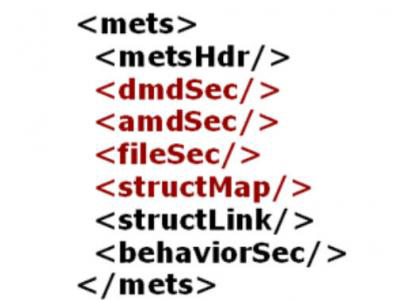UNT Libraries' METS Profile Now Registered with Library of Congress

History of METS
In the digital library world there is a metadata standard called the Metadata Encoding and Transmission Standard (METS). This standard has been in development in the digital library community for over a decade with roots back to the early Making of America II project in 1998. Currently, the standard is maintained in the Network Development and MARC Standards Office of the Library of Congress.
But what is it?
The METS format allows digital libraries to encode information about digital objects in a way that can be read and deciphered by others in the digital library world. METS has seven main areas that act as containers for information common across digital objects. These containers include:
METS header - metsHdr
Descriptive Metadata - dmdSec
Administrative Metadata - amdSec
File Section - fileSec
Structural Map - structMap
Structural Links - structLink
Behavioral - behaviorSec
Using these different containers to encode and serialize metadata about the attributes of a digital object allow practitioners in the digital library area to have a consistent way of denoting, presenting, and building systems with a common format.
METS Profiles
One of the challenges with METS is that each organization that implements METS will do it in a slightly different way because of local needs. To make this sustainable the METS community has a standardized way of describing how an institution uses METS: what it requires, makes optional, and forbids in its implementation. An organization can register its profile with the Library of Congress where it will be evaluated by the METS Editorial Board, and by the METS community before it is formally accepted as a METS Profile.
So what’s the news?
In the UNT Libraries we have been using METS to serialize our digital objects for the past six years, and we’ve finally gone through the process of having our local METS implementation accepted by the METS Editorial Board, the METS community, and the Library of Congress as the newest METS Profiles. Ours is the 45th profile to be accepted over the past decade or so. If you are interested in seeing the profile, here is the link (warning, big blob of XML): http://www.loc.gov/standards/mets/profiles/00000045.xml
We formalized our use of METS in this METS Profile as part of a self-audit of our repository infrastructure as we work to document how we are a trusted digital repository.
For additional information about METS, take a look at the Library of Congress site: http://www.loc.gov/standards/mets/
For the news release at the Library of Congress, see: http://www.loc.gov/standards/mets/news052115.html

